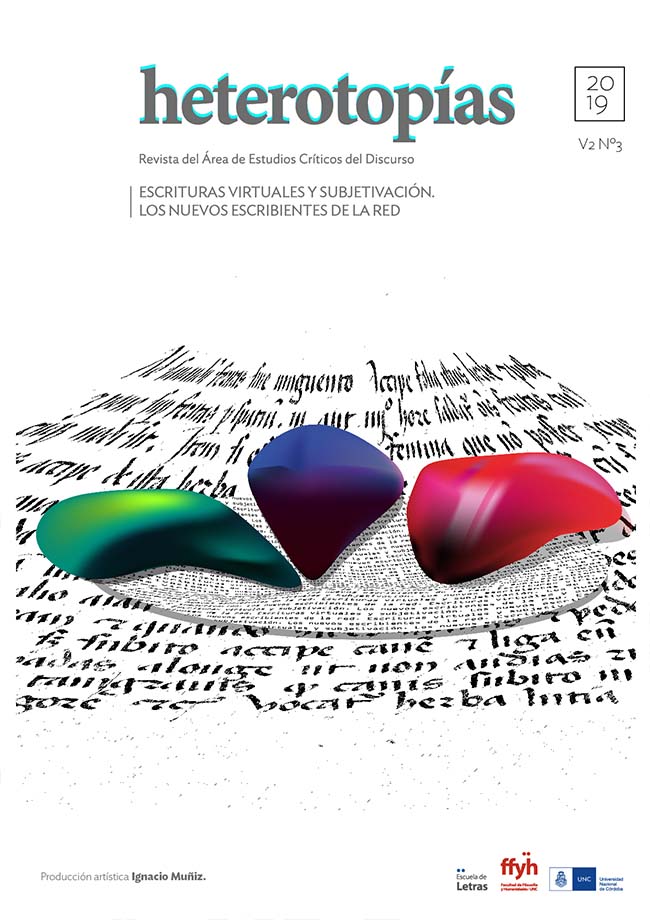Chained: a victorian nightmare: thirty minutes into the future?
Main Article Content
Abstract
George P. Landow
Founder, editor in chief and webmaster
[http://www.victorianweb.org]
Professor Emeritus of English and Art History, Brown University [george@victorianweb.org]
The present text is a translation made by Dr. Isaura Sánchez, professor at the Autonomous University of Mexico. This translation begins with the question "Why thirty minutes in the future?" Because the experience of seeing -no, experimenting-, the most recent adaptation of Dickens' Christmas Carol removed the memories of Max Headroom, the old television series of science fiction whose subtitle or slogan was "Twenty minutes in the future" ...
Downloads
Article Details
Those authors who have publications with this journal, accept the following terms: Those authors who have publications with this journal, accept the following terms:
a. The authors will keep their copyright and guarantee to the journal the right of first publication of their work, which will be simultaneously subject to the Creative Commons Attribution - Non-Commercial - Share Alike (by-nc-sa) Attribution License; no commercial use of the original work or any derivative works is allowed, the distribution of which must be done with a license equal to the one that regulates the original work.
b. Authors may adopt other non-exclusive license agreements for the distribution of the published version of the work (e.g., deposit it in an institutional telematic archive or publish it in a monographic volume) provided that the initial publication in this journal is indicated.
c. Authors are allowed and recommended to disseminate their work through the Internet (e.g. in institutional telematic archives or on their website) before and during the submission process, which may lead to interesting exchanges and increase the number of citations of the published work. (See The effect of open access).
How to Cite
References
Aarseth, E. (1997) Cybertext: Perspectives on Ergodic Literature. Baltimore: Johns Hopkins University Press.
Benedikt, Michael, ed. (1991) Cyberspace: First Steps. Cambridge: MIT Press.
Berger, P. y Luckmann T. (1966) The Social Construction of Reality: A Treatise in the Sociology of Knowledge. Garden City, N.Y.: Doubleday.
Bolter, J. y Grushin R. (2001) Remediation. Cambridge: MIT Press.
De Certeau, M. (1984) The Practice of Everyday Life. Trans. Steven Rendall. Berkeley: University of California Press.
Earnshaw, R. A., Gigante M. A., y Jones H., eds.(1993) Virtual Reality Systems. London: Academic Press.
Gelertner, D. (1992) Mirror Worlds; or the Day Software Puts the Universe in a Shoebox/... How it Will Happen and What it Will Mean. New York: Oxford University Press.
Hayles, N. K. (1999) How We Became Posthuman: Virtual Bodies in Cybernetics, Literature, and Informatics. Chicago: University of Chicago Press.
Heim, M. (1993) The Metaphysics of Virtual Reality. New York: Oxford.
Henderson, J.V., Pruett, R.K., Galper, A.R., Copes W.S.(1986) “Interactive Videodisc to TeachCombat Trauma Life Support.” Journal of Medical Systems 10 (Junio): 271-76.
Ijsselsteijn, W. (2002) Elements of a multi-level theory of presence: phenomenology, mental processing and mental coordinates. Proceedings of PRESENCE 2002. Universidade Fernando Pessoa. Porto, Portugal. 9-11 October 2002. [Accessed by Seegert 15 August 2008]
Jones, L., Karloski J.L., y Smith, S.G. (1987) A General Chemistry Learning Center: Using the Interactive Videodisc. Academic Computing 2 (Septiembre): 36-37, 54.
Miles, A. “Softvideography: Digital Video as Postliterate Practice” in Digital Tools and Cultural Contexts: Assessing the Implications of New Media. Ed. Brian Hawk, James A. Inman, and Ollie Oviedo. [Pre-publication PDF copy]
Rose, A. (2009). “New York Vérité (Sort of).” City Section, New York Times 3 April 2009. [Online version]
Ruskin, J. (1903). The woks of John Ruskin. Ed. E. T. Cook and Alexander Wedderburn. Library edition. 39 vols. London: Allen and Unwin, 1903-1912.
Ryan, M. (2001). Narrative as Virtual Reality. Baltimore: Johns Hopkins University Press.
Seegert, A. (2009) ’Doing there’ vs. ‘Being there’: Performing Presence in Interactive Fiction. Journal of Gaming and Virtual Worlds 1.1: 23-37.
Wexelblat, A. (1993). Virtual Reality: Applications and Explorations. Boston: Academic Publishers Professional.
